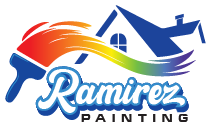Pressure cleaning, also known as power washing, is an effective method for removing dirt, grime, mold, and stains from various surfaces. This cleaning technique utilizes high-pressure water spray to achieve remarkable results, making it a popular choice for homeowners and businesses alike. In this guide, we will explore the benefits, equipment needed, and best practices for pressure cleaning.
What is Pressure Cleaning?
Pressure cleaning is a cleaning method that involves using a high-pressure water spray to clean surfaces. This technique is suitable for a variety of applications, including driveways, sidewalks, decks, patios, siding, and vehicles. By effectively blasting away dirt and debris, pressure cleaning can restore surfaces to their original condition and enhance curb appeal.
Benefits of Pressure Cleaning
- Deep Cleaning: Pressure cleaning removes stubborn dirt, mold, mildew, and stains that regular cleaning methods may not eliminate.
- Time-Saving: The high-pressure spray covers large areas quickly, making it a time-efficient cleaning method.
- Enhances Curb Appeal: A clean exterior significantly improves the appearance of your home or business, potentially increasing its value.
- Prevents Damage: Regular pressure cleaning can prevent the buildup of harmful substances that can cause long-term damage to surfaces.
- Environmentally Friendly: Pressure cleaning often requires fewer chemicals than traditional cleaning methods, making it a more eco-friendly option.
Equipment Needed for Pressure Cleaning
- Pressure Washer: The core equipment for pressure cleaning. Choose between electric and gas-powered models based on your needs. Electric washers are suitable for light tasks, while gas models offer more power for heavy-duty jobs.
- Nozzles: Different nozzles provide varying spray patterns and pressure levels. Common nozzle sizes include 0°, 15°, 25°, and 40°.
- Surface Cleaner Attachment: Ideal for flat surfaces, this attachment helps achieve an even clean and reduces streaking.
- Cleaning Solutions: Depending on the surface, you may need specific cleaning solutions (like detergents or degreasers) to enhance cleaning effectiveness.
- Safety Gear: Always wear protective gear, including safety goggles, gloves, and non-slip footwear to ensure safety while operating the pressure washer.
Best Practices for Pressure Cleaning
- Assess the Surface: Before starting, inspect the surface you plan to clean. Determine the appropriate pressure level and cleaning solution needed for the job.
- Test a Small Area: Always test the pressure washer on a small, inconspicuous area to ensure it won’t damage the surface.
- Use the Right Nozzle: Select the appropriate nozzle based on the task. For example, use a 15° nozzle for tough stains and a 40° nozzle for delicate surfaces.
- Maintain Distance: Keep the nozzle at a safe distance (usually 12-24 inches) from the surface to prevent damage. Adjust the distance based on the pressure and surface type.
- Start from the Top: When cleaning vertical surfaces, start from the top and work your way down. This method prevents dirty water from running down onto cleaned areas.
- Rinse Thoroughly: After applying cleaning solutions, rinse the surface thoroughly to remove any residue. This step is crucial to prevent streaks and damage.
- Follow Manufacturer’s Instructions: Always refer to the pressure washer and cleaning solution manufacturer’s guidelines for optimal results and safety measures.
Conclusion
Pressure cleaning is an effective and efficient way to maintain and restore surfaces around your home or business. By understanding the benefits, using the right equipment, and following best practices, you can achieve impressive results and prolong the life of your outdoor surfaces. Whether you’re preparing for a sale or just want to spruce up your property, pressure cleaning is a worthwhile investment.
